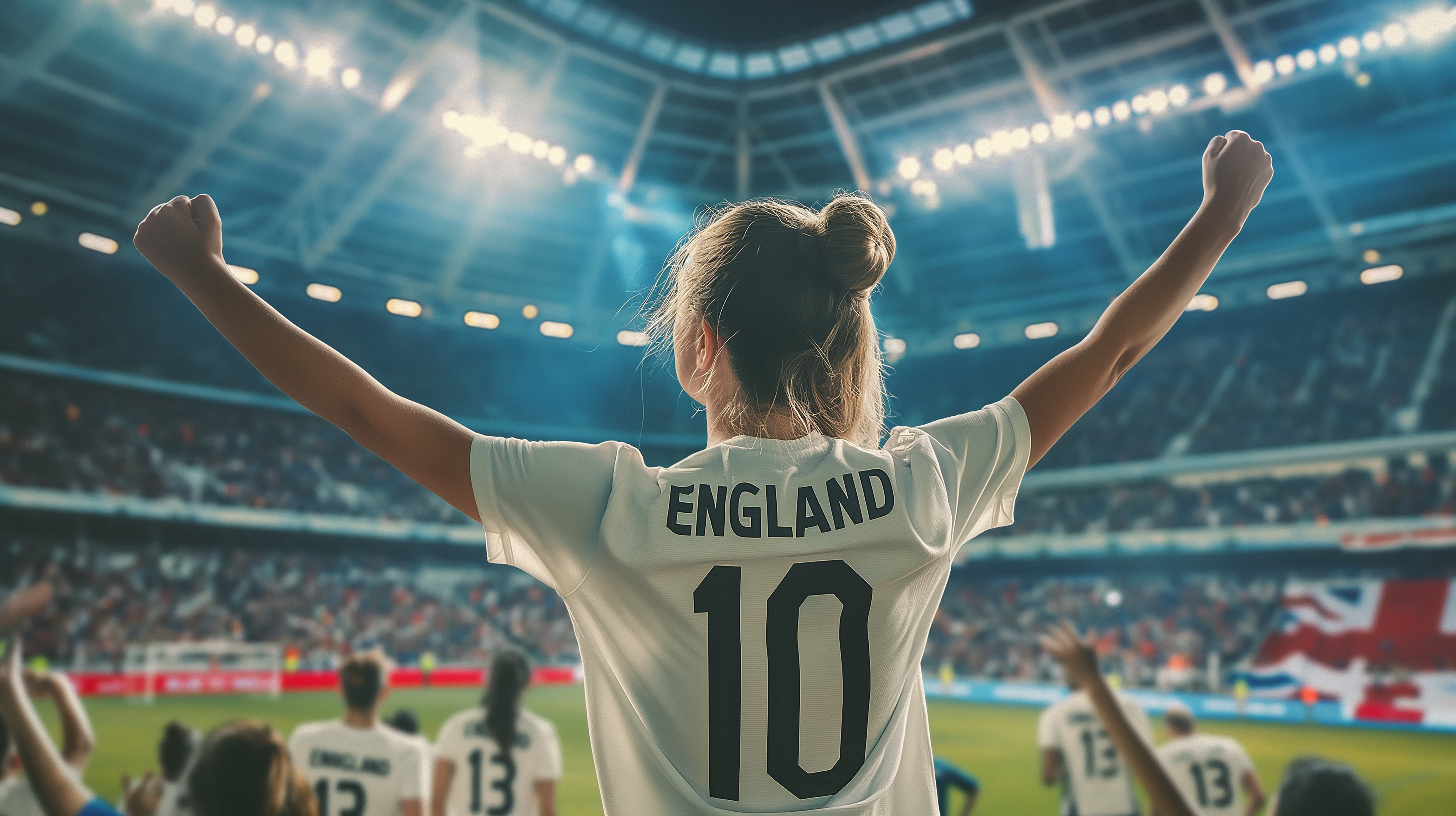
When the England Lionesses lifted the UEFA Women’s Europe trophy in 2022, they did more than make history – they ignited a movement. When they lifted that same trophy earlier this week, that movement didn’t just pick up pace, it transformed the future of sports marketing.
The spotlight on the Lionesses back in 2022 sparked a nationwide surge in support for women’s football. England Football states that almost 1,500 new teams were registered in the immediate aftermath of the Lionesses’ 2022 win, while 12.2 million people watched England’s 2025 win, making it the most watched television moment of 2025 across all TV broadcasters.
How women's sport is shaping the future of marketing
The 2025 EUFA Women’s Football official sponsors include the likes of Heineken, Just Eat, Lays, Visa, Amazon, Adidas, EA and PlayStation. Add to that this latest win, the future of sports marketing is changing, and fast.
Commercial opportunities
Arguably they should have noticed it a long time ago, but more brands are seeing women’s sports as a valuable market and are significantly increasing their investment, including extending their sponsorship of men’s leagues to women’s. With increasing viewing figures, fresh marketing segments are being created. Deloitte has reported that women’s elite sports revenues globally will surpass $2.35 billion in 2025. That would mean a 240% increase over the past four years.
In 2024, the UK Government launched its 2024-25 Women’s Sport Investment Accelerator scheme, helping to attract more private investment into women’s sport and drive growth in the sector. More than 20 leagues, teams and competitions across nine different sports are set to benefit.
In short, investment in women’s sports is rising quickly, and with that comes an array of commercial opportunities. Everyone will want in, though, so brands will have to act quickly as well as strategically.
Shifting brand messaging
If you sat through any Euros match this year, there was a clear narrative across the adverts – empowerment. Adverts like Visa’s, showing a young girl going from practising in the rain to playing for England in the Euros. Brands choosing to align themselves with women’s sport are those whose messaging is already around themes like inclusion and equality. These same brands are investing increasingly in grass roots women’s sports, understanding that this growing interest in and excitement around women’s sports will continue. It’s highly likely we’ll see more brands go down the route of this shifted narrative, which means a substantial shift in brand messaging.
However, brands who appear to be jumping on the narrative and lacking authenticity will lose out significantly – authenticity wins every time.
Broadcast and media opportunities
More women’s sports matches are being broadcast on mainstream channels, which is creating new ad and partnership opportunities. The result? Women’s sport had its most-watched year ever in 2024, with 44.7 million viewers tuning in, according to Sports Pro.
We’re also increasingly seeing social media campaigns, from viral clips to behind-the-scenes content, as integral to marketing strategies. The first five months of 2025 saw a huge year-on-year increase in digital content posting from leading women’s sport leagues and properties, according to the Women’s Sport Trust. European football dominated views and engagements on Instagram, with FC Barcelona Women racking up 38 million engagements; in the UK, the BWSL drove 56 million TikTok views.
These huge viewing and engagement figures present an enormous opportunity, both across broadcast and social media.
Endorsements and collaborations
As players like goalkeeper Hannah Hampton, Michelle Agyemang and Chloe Kelly become marketable stars, we can expect to see a significant increase in endorsements and collaborations – and quickly.
Lucy Bronze already has brand deals with Visa and Spotify, while Leah Williamson, England captain, is now a brand ambassador for Gucci. Other players have six-figure deals with the likes of Calvin Klein, Google Pixel and Adidas.
The pool of athletes brands have access to is growing. (Although let’s be clear – these athletes have always been here, and as a woman writing this I won’t suggest these women have just appeared overnight – they’ve always been there but, unfortunately, they’ve only recently become interesting to the big brands. But better late than never, I suppose.) Perhaps I should say, brands are choosing to widen the pool of athletes they have access to, which means more commercial opportunities for brands.
What does the increased interest in women’s sports mean for brands?
Success breeds success and we’re already seeing performance-based ROI in women’s sports. In the past few years investment in women’s sports has delivered real, measurable ROI, across attendance, media reach and engagement metrics.
For brands, an array of growth opportunities have opened up. Marketing investment in women’s sports will become an integral part of many brands’ marketing strategies. Whether that’s because they want to strengthen their authentic messaging around inclusivity or reach a target audience that’s growing in women’s sports, the sports marketing landscape will get much, much busier.
Bring your sports marketing strategy home with Blueprint Partners
Blueprint Partners supports clients within the sports sector, from our livery reveal for the BWT Alpine F1 Team to our Sky Sports experiential roadshows. To find out how we can help you reach your target audience in the sporting sector, get in touch today.
More posts like this
How experiential events are reinventing the retail storefront
November 13, 2025
AI in the automotive industry: how it’s transforming manufacturing
October 13, 2025
Website brief template: how to write a website design brief
August 6, 2025
Direct vs indirect marketing channels: what’s best for you?
September 26, 2025
Creating memorable brand experiences: what works in 2025
September 12, 2025











